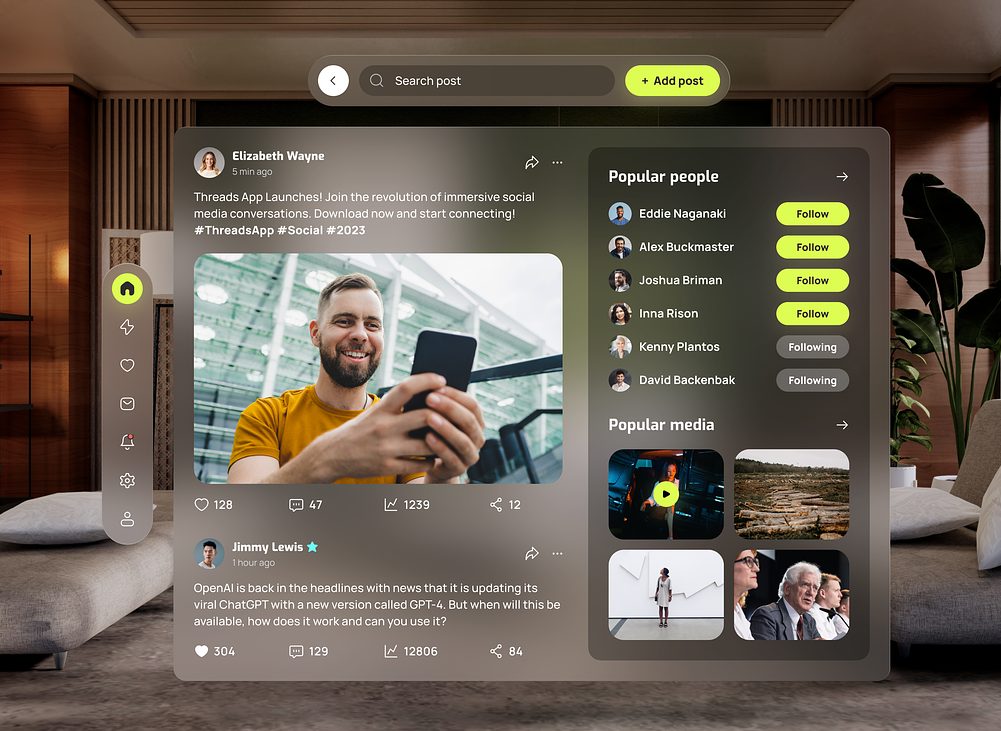No matter how much time has passed and how many competitors have appeared on the market, React remains a top framework. To master it, look through our tips, and let us know if you have any more questions, recommendations, or React app best practices that the developer community should know about. And yes, you can hire React JS developer from us.

What is React, and how is it used?
Since it simply needs a basic understanding of HTML and JavaScript, React has become increasingly popular among React development businesses as a front-end web development solution. One of the most popular front-end JavaScript libraries for building web applications is ReactJs. React has been chosen above other well-known libraries and frameworks for convenient React app best practices and for creating sophisticated user interfaces by about 8,000 firms worldwide.
React.js is an open-source JavaScript programming language framework. With this framework, developers can create user interfaces of different levels of complexity for single-page applications. You can use this technology to handle the presentation level of web and mobile applications. React currently has the largest community of any other framework. Take advantage of open data libraries and react tips from creators’ react best practices worldwide to make your interaction with the framework as productive as possible.
React was first used in the Facebook social networking feed in 2011. With this framework, developers can create React architecture, diagram large web and mobile apps, and modify data without reloading the page. It’s a fast, simple, and scalable framework. Use ReactJS best practices with a combination of other libraries to create exciting applications. So here we go with React JS best practices.
For writing substantially less code than you would, for instance, with vanilla JavaScript when creating interactive user interfaces and web applications. You design your applications with React by building reusable components—which you may conceive as separate Lego blocks. Components in React represent any composable behavior, including state, lifecycle, and rendering. Some external libraries, such as Relay, provide components with additional duties, like describing data dependencies. React app best practices imply that those concepts will also return to React in some other form.
React challenges
Though React solves the problems of front-end developers when developing interfaces for dynamic websites and SPA applications, there are specific challenges of React each React developer may face during the work. Redrawing the classic bundle of JavaScript and HTML becomes much more complicated. React, on the other hand, does not limit the possibilities of the developer, unlike any frameworks.
Why do managers of many companies choose React as a coding language, although they often need to be better acknowledged in development? They think finding developers this way will be easier and more efficient. That’s right, the job market for React is enormous. Anyway, the tools must be selected for the project in particular. Ideally, developers should choose. If it’s React, great, everyone is happy.
React is an excellent solution for custom projects. Practically, it does not limit you in anything, allowing you to do what you want and how you want. You can make some cool stuff if you have design experience and a sense of beauty. However, there is always a price to pay for freedom. And that’s another React challenges.
If you work on one React project, for example, it means working on ONE React project simultaneously. Each developer has a vision of writing React code and organizing the application architecture. Often, these differences are significant from developer to developer. Below, you will find more practices to overcome the challenges and improve the work.
React best practices
Look at some essential React coding standards and best practices for using this framework. Follow these simple React programming tips to make your React application competitive and work correctly. Or hire ReactJS developers. The methods we mentioned are successful examples of how you can improve the functioning of your project.
Shall we begin with the React component best practices for efficient coding?
1. Keep components small and function-specific
What are the benefits of components? It is known that thanks to the React framework, you can get huge components that help you accomplish several tasks. But the best way to design components is, of course, to make them simple and small. That way, you can provide one component to perform just one function. You have done your design task well if a single component can render a specific part of an application page or change its behavior.
Components will most often be completely self-contained. That makes maintenance and testing at different stages of development much more accessible. It’s also vital that developers reuse each component in numerous projects at once. You can borrow components that perform standard functions from community React JS development forums. Remember that the smaller the component, the easier it is to optimize performance and the update process.
For example, we can move this function into a separate file:
export function capitalizeFirstLetter(string) { return string.charAt(0).toUpperCase() + string.slice(1); }
And then import it into the component:
import { capitalizeFirstLetter } from ‘./stringlib’;
As you can see, we keep functions pure; smaller components give you more room to implement your projects. At the same time, more significant components will take up more space and be less flexible. You can use components as you see fit and combine them depending on the goals and needs of your particular project. Take advantage of the expertise of the framework community because there are many solutions for different tasks.
2. Put CSS in JavaScript
At the first stage of project development, keeping all CSS styles in a single SCSS file is usual. By implementing a global prefix, you can prevent all possible name conflicts. Still, there are cases where this solution will not be appropriate—for example, scaling a project. To develop the best and most appropriate code for large-scale web applications, we frequently adjust the following:
//Box.jsx
import React from “react”;
import “./box.css”;const Box = () => <div className=”box-text”>Wesionary Team</div>;
export default Box;//Box.css
.box-text {
display: flex;
align-items: center;
justify-content: center;
height: 100px;
width: 100px;
background-color: rgb(206, 65, 65);
border: 2px solid rgb(0, 0, 0);
}
Creating a style and theme can be very challenging during the development of large projects. However, maintaining these large SCSS files is a difficult task too. It is the reason why the concept of CSS-in-JS solutions appeared. Such libraries are based on this concept: EmotionJS, Styled Components, and Glamorous.
Use the libraries listed above, depending on what your project requirements are. For example, you can use Styled Components or Glamorous for more complex themes.
3. Use a linter
Linking is one of the essential elements in the project development process that allows you to run a program to analyze the code for possible errors.
For example, During setup, use yarn create react-app react-linting or npx create-react-app react-linting to construct a React app to get started. We must expand the default configuration of Build React App, which already includes some of the required ESLint packages.
Usually, developers use this element to solve problems related to the programming language. However, you can also use it to fix code quality and other issues automatically, such as incorrect code style. If you use the linter in your React code, you can keep your code free of bugs and errors.
Read on for more React coding standards and best practices.
4. Comment only where necessary
It is one of the framework’s best practices React has and an opportunity to achieve two goals simultaneously. Use the ability to leave comments only when necessary and benefit the development process.
For example:
These are the two ways to add comments in React Native:
- // (double forward slash) is applied to comment only some single line of React Native code; however, it may only be used outside the render block.
- If you need to comment on JSX, all you need to apply is JavaScript comments inside curly braces like {/* Comment here /}.
That way, you can leave visual clutter in the code and avoid possible conflict between comments and code. If you are going to change the code later on, comments can prevent your product from working correctly. So remember that you should only leave comments where you can’t otherwise.
5. Use capitals for component names
If you use JSX for development, all new component names must start with capital letters. It is necessary so that JSX can identify and handle them differently from the default HTML tags.
Here’s an example that provides the correct output using capital letters:
import React, { Component } from “react”;
import ReactDOM from “react-dom”;
class Button extends Component {
render() {
return <button className=”App-button”>Yo!</button>;
}
}
ReactDOM.render(<Button />;, document.getElementById(“root”));
Previous versions of React supported all inline names fully. That made it possible to distinguish them from the usernames. However, this system had a disadvantage. Lists of names were constantly updated. So, using capital letters by default to name components was customary.
You can use lowercase letters again if your application is not written in JSX. However, remember that this may affect the reuse of components in other projects.
6. Separate stateful aspects from rendering
Now, let’s turn to React component structure best practices. All components in the React framework may or may not have been stated. Those components with state tracking capability store the component’s state data and provide the necessary context for development.
On the other hand, those components without a state have no memory and cannot provide context for different UI components. They take input from the parent component and return JSX elements in return. Remember that it’s possible to scale and reuse them, and they’re also similar to pure functions in JavaScript.
One of the best React practices for better code quality is to keep the structure and loading logic of external data with state preservation separate from the rendering logic without state preservation. In that case, you’re better off having multiple or one component with state tracking to load data and a separate component without a state to display that information. It reduces the complexity of the components considerably.
Later versions of React have an advanced feature called React Hooks, which allows you to create components for state-tracking functions. As a result, removing the need for class-based components is possible.
Let’s say your project receives information during rendering. You need to manage the information in the main component and then pass the complex rendering task to a subcomponent as properties.
7. The code should be testable
The code you write as part of your project can easily be tested and verified. Keep this simple rule in mind when writing code. By the way, here’s one of the best React practices. Give test files the same name as the original file, adding the suffix’ .test.’ It will make it much easier for developers to find files that have already been tested before.
Use applications like Cypress.io or JEST to test your React code. Your project code should behave properly and be easily and quickly tested by testers. If your code is difficult to test, you will have problems with other phases of project development.
8. All files related to any component should be in a single folder
An obvious but essential tip regarding React component design best practices is to keep all files belonging to the same component in the same folder. It also applies to code-style files. Thus, each component folder should include a group of corresponding files. It keeps the hierarchy consistent across the entire codebase. Component.js, Component.css, and Component.test.js are required files in your app’s directory structure:
└── /src
├── /assets – Contains static assets such as images, svgs, company logo, etc.
├── /components – reusable components like navigation bar, buttons, forms
├── /services – JavaSript modules
├── /store – redux store
├── /utils – utilities, helpers, constants.
├── /views/pages – the majority of the app pages would be here
├── index.js
└── App.js
If you use a separate component only within a larger component, keep all the smaller components in the same folder. Then, you will have a simple hierarchy and structure, and finding the components you need will be easier. Use a strict structure and folders within folders to make extracting or changing code for other projects more accessible.
Among React development best practices, the important one is that one folder should contain CSS styles, images, tests, and other subcomponents related to a specific component. If you name the files succinctly and logically place similar and related files together, you’ll have an easier time finding them later if required.
9. Use defaultProps and propTypes
As your project grows, you may notice a few bugs with type checking. You can use JavaScript applications such as Flow or TypeScript for specific projects. However, React still has basic type-checking capabilities if you don’t use them. To trigger type checking for component props, you can assign a special propTypes property, which you’ll find React services best practices thanks to this framework’s large community of users. An example from the GitHub community:
type Props = {
size: number,
value: Point,
active: boolean,
onClick?: (value: Point) => void,
arrowDirection?: ‘left’ | ‘top-left’ | ‘top’ | ‘top-right’ | ‘right’ | ‘bottom-right’ | ‘bottom’ | ‘bottom-left’,
};
export default class ImageFocusPointCell extends React.PureComponent<Props>; {
static defaultProps = {
active: false,
showArrow: true,
};
// other code not important for this rule
}
10. Keeping code clean
A consistent programming approach to coding known as “clean code” makes your code more straightforward to write and readable and maintains and ensures better code quality. A developer frequently works on a problem for a while before submitting a pull request once it has been resolved. I argue that simply because your code “works,” you are not finished. Clean React code is your guarantee of everything working smoothly. So this is your time to tidy things up by deleting any commented-out code, removing zombie code, and restructuring. For example:
// Dirty
const MyComponent =() =>(
<div>
<OtherComponent type=”a” className=”colorful” foo={123} bar={456} />
<OtherComponent type=”b” className=”colorful” foo={123} bar={456} />
</div>;
);
// Clean
const MyOtherComponent = ({ type }) => (
<OtherComponent type={type} className=”colorful” foo={123} bar={456} />
);
const MyComponent = () => (
<div>
<MyOtherComponent type= “a”/>
<MyOtherComponent type= “b”/>
</div>
);
Standards & complexity
In React, the use of the DRY (don’t repeat yourself) philosophy is the key. Put all of your CSS files in a single shared folder. If feasible, avoid using Inline CSS (a CSS class should be created when there are more than 2 CSS attributes). Make your code easy to review by using a linter.
If you have ever worked on a large and complex project, you know very well that development standards, style guides, and the like are necessary so that you do not hate everything around you. The more complex the product, the more difficult it is to work with. If you have implemented a system of rules and try to stick to it from the beginning, you can exit with minimal losses and a stable application. If you deviate and start doing whatever you want, you will experience real pain.
Is React a sophisticated system? Happily, React is simple to learn—but only after you have a solid understanding of JavaScript. Of course, everyone has a different perception of what is tough when learning anything new. No matter your experience level, many essential resources can simplify learning React.
So, React doesn’t provide any quality guarantees. It allows too much responsibility for anything, which means that every developer has great opportunities to harm the project if they do not stick to React component design best practices. And the larger the team, the more complex the situation. The greater the complexity, the faster it increases, and the sooner everything becomes confusing and becomes a nightmare for both users and programmers. So, be careful with that.
Library vs. framework
There is a meaning that React can only be used in a React app. Everyone knows that React is a library rather than a framework. You can use the same jQuery with React dataflow, Angular, and Vanilla JS, and with anything without any problems.
On the other side, three means that Angular is a full-fledged framework, which is an application. It gives you everything you need and guides your every move. JavaScript library for creating user interfaces is at hand. It allows you to assemble a complex UI from small isolated pieces of code called “components.” React provides two syntaxes for creating components: class and function.
However, besides the library, a specialist will benefit from knowledge of technologies such as HTML, CSS, JavaScript, npm, Git, Babel, WebPack, and Redux. Skills in working with other tools may also be helpful, but this already depends on the project.
The “technical” distinction between a JavaScript library (like React) and a framework (like Angular or Vue. js) is that a framework dictates how a developer constructs an application. In contrast, a library comprises functions an application can call to carry out a task. The framework calls the application code.
Balancing between a library and a framework, React strives to be both simultaneously. On the one hand, there are library functions in the basic package to which you can add whatever you want. On the other hand, you can’t grow them into anything other than a React app. You are stuck in the system and now use React as a framework.
Easiest way to create React website
We hope you’ve found all the essential information about React development best practices above and now you have a better idea about creating clean React code. Or, you may simply need a senior React developer.
You’ve come to the right page if you want to create your web project based on React coding standards but don’t need a team of experienced developers. We at Fireart Studio are ready to help you develop an app or a website according to your requirements and goals. Read also: App Development Guide: Best Practices
Conclusion
We’ve checked on the most popular React best practices to write this article. When it comes to React explained and the React workflow, and other peculiarities, there are specific tips at your hand that may help you make your interaction with this framework as productive as possible. If you are wondering which language to choose for an iOS app, or want to know the benefits of React for your project, we’ll be happy to answer your questions.
React allows you to choose the tools, architecture, and libraries for developing your application. It is also more accessible and more profitable to find developers. Remember that this framework has the most extensive fan base worldwide, so you can apply standard practices that community members share on forums.
If you are looking to use the services of a JavaScript development company to achieve great results, our React.js consultants will gladly answer your questions and help find the best technical solutions to ensure top code quality. You only need to contact us and describe your project idea.





















